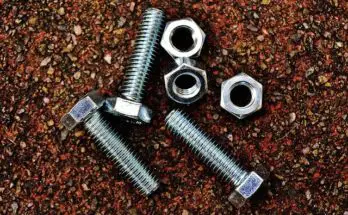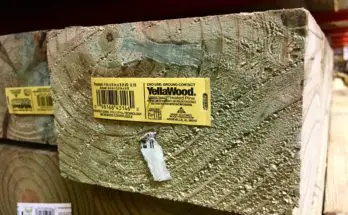Producing an MDF joint can be more challenging than it appears. With the use of yellow glue and screws, your MDF will have excellent joints. However, the main question to ask is, “what is the best wood glue for MDF?”
PVA glue, otherwise called the Polyvinyl Acetate, is the best wood glue for MDF. Asides being a strong wood adhesive, it’s also great as fabric, paper, or leather adhesive. It’s safe to say that it’s a crucial tool for appropriate wood finishing.
Please note that PVAs will not bond properly with porous surfaces. Besides, you may not always hear this glue referred to as PVA. Sometimes people call it white glue, school glue, Elmer’s glue, or Carpenter’s glue. Whichever name it may be, they all describe the PVA. One of the significant examples of PVA glue is the Gorilla glue. Later in this article, we’d get to see how PVA glues as Gorilla Glue works with MDF.
What is MDF?
One of the most typical terms that carpenters and wood engineers use is the word “MDF.” In full, it implies Medium Density Fibreboard. It is made by breaking down residuals of hardwood and softwood into wood fibers. In most cases, the producers of this material utilize a Defibrator for the process. The fiber is combined with wax in a resin binder, which later forms into panels by applying a high temperature and pressure level. Generally, Medium Density Fibreboards have higher densities than plywood.
However, the question is, “Why does MDF differ from the regular wood?” From the components, you may notice that it’s a high-grade composite material. It’s safe to say that this kind of material is better than the traditional wood in many ways. For instance, it’s more resistant to changes in humidity and heat than solid wood. On an average day, you’d figure that the typical solid wood either expands or contracts due to the environment.
Let’s see how MDF differs from plywood. Indeed, you may notice that it typically costs more than regular plywood. Thanks to the composition, it has a magnificent surface without knots. Hence, it’s great for painting, and it serves as a fantastic substrate for Veneer. Due to the impressive features of MDF, you can enjoy the easy cutting of more detailed designs. There are certain things that are compatible or incompatible with MDF; we’d be looking into them.
Is Gorilla Glue good for MDF?
Since Gorilla wood glue is relatively multipurpose, it can work correctly for your Medium Density Fiberboard. The bond is suitable for use on different kinds of hardwood, softwood, and composite materials. For this reason, you can be sure to get proper adhesion.
Interestingly, the main strong point of the Gorilla Glue is its industrial holding prowess. If you’re into the woodworking, you will discover that this product is efficient for metal, ceramic, glass, foam, and more materials.
Besides, the glue is waterproof, temperature resistant, and stainable. It may interest you that the Gorilla glue is different from the others like the traditional polyurethane glues and the epoxy. Please note that the product is PVA based, so it’s one of the best for MDF. It can be a little challenging to apply gorilla glue to Medium Density Fibreboard. However, we’d have a quick look into the tips that can help with using this glue.
How to use Gorilla Wood Glue on MDF
Ensure that you begin by cleaning the mating surfaces. If you’re gluing two surfaces, clean both of them. Your mating surfaces need to be dry as well. You must have a body without excess sawdust because that
can affect the adhesive property of the glue. For the sake of accuracy, it helps when you test fit the joint before applying the glue.
How can you test the joint? Take the two wooden parts and connect them; if it fits, then you’re ready to go. When applying the Gorilla Wood Glue, you should ensure that you don’t put too little or too much. If the glue isn’t enough, you won’t get a strong connection in your joint. However, the reverse is the case for an adequate amount. Meanwhile, when the glue is too much; it flows outwards and messes up your project.
Use the appropriate amount of glue on the center of the surfaces and spread it out around the wood using a brush. After you’re done applying the glue, you should clamp the joint for 20 to 30 minutes. Please note that you shouldn’t pressure the contact points to avoid the glue from squeezing out. The last step to using a gorilla glue is cleaning up. Since it’s a non-toxic product, it quickly gets cleaned up with water. If you have a glue run-out problem, wait for it to dry up. Once it’s dry, you can go ahead to scrape it all up before you paint.
Can you Use Liquid Nails on MDF?
It’s not very advisable to use liquid nails on MDF for gluing a joint. However, they are great for hanging paneling. When you use liquid nails, the joint will remain flexible. So, if you’re after gluing, the gorilla glue is a better option. Interestingly, MDF is great for walls.
For this reason, you may find the liquid nails handy at some point. Moreover, it’s more durable than plasterboard. Besides, it is easy to sand and free of blemish.
Now that you know what works best with MDF, you may be asking about the general application of liquid nails. Generally, they are known to support fast adhesion of bonded materials. In other words, they are great adhesive agents.
You can also make fair use of them on uneven surfaces, without a need to worry about it failing. Once they are applied, they begin drying up within 15 minutes, and they reach their maximum strength within a week. Please note that 15 minutes is only an estimate. In reality, the dry time depends on temperature, humidity, and the material attached.
If you’re comparing the liquid nails to wood glue, you should know that the latter takes a long time to create a bond. However, wood glue creates a more reliable connection between wooden materials.
Will Super Glue Work on MDF?
Using superglue on MDF will work correctly. However, it dries up very fast. Since super glue has an impressive capillary action, it’d be great on MDF. It’s not a bad idea to use them side by side with your traditional PVA glue. The regular wood glue takes a while to set up. So, without a clamp, the use of super glue can be your best bet. With super glue, you should be able to hold the MDF together, pending the time your wood glue works the magic.
In most cases, the regular super glue is used for plastic. However, they are relatively good on wood, including MDF. When using it for wood, all you need is a little; since it’s not the adhesive, you’re utilizing. Chemical experts refer to super glue as cyanoacrylate, a bond that improvises for the clamp.
The new superglues that are out on the market today are extremely strong. However, the ones produced earlier were relatively weak materials, mainly when an external force is applied to the joint. Even though super glues are great, you may figure out that they have a few disadvantages. The joints must have been correctly aligned before using them. If you didn’t test fit the MDF joint, this might mess up your entire project.
How do you Glue MDF boards together?
Gluing MDF boards together isn’t a difficult task. Start by laying out your sheets on top of each other. The purpose of this is for test fitting. When you successfully discover how well they fit, you can move to the next step. You should try to pre drill/countersink a couple of holes for screws on the boards. Separate the MDF boards and evenly spread some glue on them. Ensure that you don’t apply too little or too much glue on the surfaces. Since you’re dealing with a board, the surface area will be a large one.
For this reason, you need to go through those steps as quickly and calmly as possible. Carefully place the top board on the other one. At this point, you can go ahead by putting screws where you initially drilled, especially for a large board. Once the glue dries, you’re good to go. Remember that you can make use of superglue in place of the clamp. However, if you have a clamp, you don’t need to use super glue for the process. If you’re making use of Gorilla Glue, it should take approximately 2 hours to dry up. Ensure you also utilize water to clean the dried glue.
Conclusion
Generally, the application of glue on MDF sounds easy. However, there’s a broad tendency to face some challenges, especially when dealing with different applications. For instance, it’s more advisable to use liquid nails on MDF when talking about hanging paneling. Gorilla Glue has a reputation for being a great adhesive agent for MDF. Since it’s PVA based, it’s great for gluing joints and surfaces together. Lastly, always remember to test fit before gluing MDF joints or boards together.




